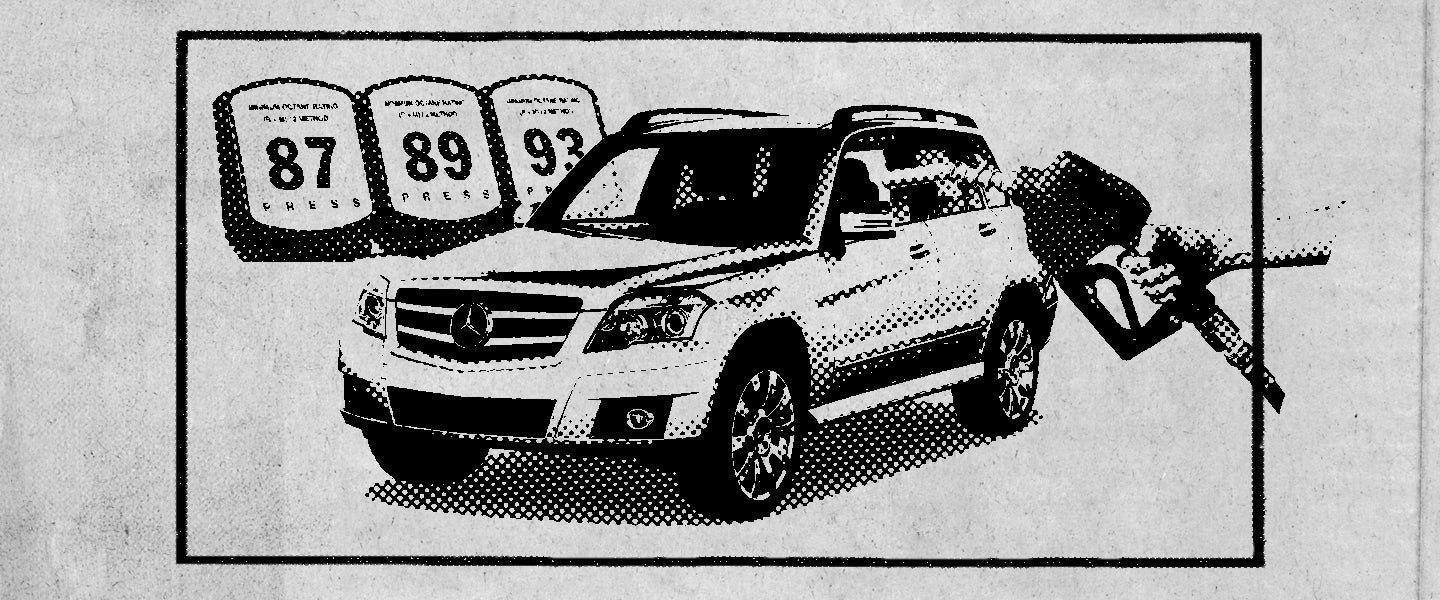If the modern automobile had a status on Facebook, it would undoubtedly be “It’s complicated.” With their computer-controlled fuel-injection systems, continuously variable transmissions and three-phase four-pole AC induction motors, the days when every Tom, Dick or Harry could wrench on their ride seem long gone. So let us help — especially with the seemingly mundane stuff that if not done properly, your dad and/or his favorite mechanic vowed would ruin your car forever. Because when it comes to cars — and this column — no question is too dumb.
I just bought my first nice car, and I’m pretty jazzed. Thing is, the car takes premium, guzzles fuel like it’s drunk and costs me more than $4 a gallon for the 91 octane. Given that I’m spending over $60 at the pump every two weeks, would it really be that bad if I switched to regular unleaded, at least until prices go back down?
I know exactly how you feel — I recently leased a BMW X1, and loved everything about it: It test drove really well; it had all the bells and whistles I wanted; and the price was right.
But like the doofus that I am, I was so caught up on the driving aesthetics that I never considered the gas mileage — or the fact that the X1, like all BMWs, takes premium. Going from my previous car, a Mazda6, which got around 24 miles per gallon in the city, to the X1, which gets around 19 on a good day, took some getting used to. But I don’t think I’ll ever get over the fact that I’m now spending $65-plus every two weeks instead of $50 every two-and-a-half.
I Used a Broker to Help Me Buy a Car, And I Totally Got a Great Deal
But back to your question: Can you put regular-unleaded gasoline in your premium car? The short answer is, yes. Generally speaking, modern cars (as in cars made in the last two decades or so) that take premium will take regular just fine, too. This is because modern cars (generally) have sophisticated onboard computers that monitor your car’s engine and adjust how it runs based on the type of gas you put in it.
That’s important because, back before modern adjustable fuel-injection systems, ignition timing and fuel compression ratios were static things. In other words, if your car ran on premium and you put regular in it, your engine wouldn’t be able to adjust to the change in fuel-type, resulting in a nasty-sounding rattle called “knocking.”
Knocking happens when the gas-air mixture in your engine’s cylinders combusts before your spark plugs have a chance to ignite it. Lower-octane gas does this because it’s not formulated to handle the compression in the cylinders of premium-octane cars, and explodes before the engine’s ready. As you can probably guess, that’s a bad thing.
But like I said, modern engines have sophisticated systems that prevent all that from happening, so your car should handle regular fuel just fine.
Still, putting lower-octane fuel in your premium car does come with some potential drawbacks. For one, depending on the manufacturer, you run the risk of voiding your warranty if you fuel up with 87 octane when you car calls for 91, so double-check that info, just in case.
The other thing to consider is that, by switching to a lower-octane fuel, you might be messing with your car’s performance, both from a horsepower standpoint and a fuel-efficiency one. And that might mean that whatever savings you’re making at the pump, you’ll be losing while you drive. So what you might want to do is fill ‘er up with 87, see what kind of mileage you get and then re-up with 91 and compare the two. If it’s less, suck it up and go back to premium.
But if it turns out you’re saving a few bucks, your car is relatively new and you aren’t voiding your warranty, then all the power to ya, because otherwise, you’re hurting your wallet a lot more than your engine.

